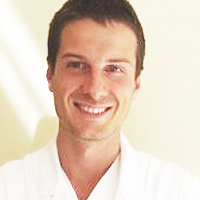Exploring pathophysiology of COVID-19 infection: Faux espoir and dormant therapeutic options
Published on: 5th May, 2020
OCLC Number/Unique Identifier: 8620512199
COVID-19 virus structural components: The 2019-nCoV, also called SARS-CoV-2, was first reported in Wuhan, China in December 2019. The disease was named Coronavirus Disease 2019 (COVID-19) and the virus responsible for it as the COVID-19 virus, respectively, by WHO. The 2019-nCoV has a round, elliptic or pleomorphic form with a diameter of 60–140 nm. It has single-stranded RNA genome containing 29891 nucleotides, a lipid shell, and spike, envelope, membrane and hemagglutinin-esterase (HE) proteins.
Steps in progression of COVID-19 illness: Once inside the airways, the S protein on the viral surface recognizes and mediates the attachment to host ACE-2 receptors and gains access to endoplasmic reticulum. The HE protein facilitates the S protein-mediated cell entry and virus spread through the mucosa, helping the virus to attack the ACE2-bearing cells lining the airways and infecting upper as well as lower respiratory tracts. With the dying cells sloughing down and filling the airways, the virus is carried deeper into the lungs. In addition, the virus is able to infect ACE2-bearing cells in other organs, including the blood vessels, gut and kidneys. With the viral infestation, the activated immune system leads to inflammation, pyrexia and pulmonary edema. The hyperactivated immune response, called cytokine storm in extreme cases, can damage various organs apart from lungs and increases susceptibility to infectious bacteria especially in those suffering from chronic diseases.
The current therapeutics for COVID-19: At present, there is no specific antiviral treatment available for the disease. The milder cases may need no treatment. In moderate to severe cases, the clinical management includes infection prevention and control measures, and symptomatic and supportive care, including supplementary oxygen therapy. In the critically ill patients, mechanical ventilation is required for respiratory failure and hemodynamic support is imperative for managing circulatory failure and septic shock.
Conclusion: Confusion, despair and hopes: There is no vaccine for preexposure prophylaxis or postexposure management. There are no specific approved drugs for the treatment for the disease. A number of drugs approved for other conditions as well as several investigational drugs are being canned and studied in several clinical trials for their likely role in COVID-19 prophylaxis or treatment. The future seems afflicted with dormant therapeutic options as well as faux Espoir or false hopes. As obvious, not all clinical trials will be successful, but having so many efforts in progress, some may succeed and provide a positive solution. Right now, though, confusion and despair prevail.
Comparison of Efficacy and Safety of Hydroxychloroquine and Teneligliptin in Type 2 Diabetes Patients who are Inadequately Controlled with Glimepiride, Metformin and Insulin therapy: A Randomized Controlled Trial with Parallel Group Design
Published on: 13th September, 2018
OCLC Number/Unique Identifier: 7856189396
Aim: The aim of the present study is to assess the efficacy and safety of Hydroxychloroquine in comparison with Teneligliptin in type 2 diabetes patients whose blood glucose levels were inadequately controlled with metformin, Glimepiride and insulin therapy.
Methods: This was a randomized, prospective, parallel-group, experimental trial done in 300 Type 2 Diabetes patients who were uncontrolled (HbA1c=7.5–10%) with metformin, Glimepiride and insulin therapy. Patients were randomly divided into two groups one received Teneligliptin 20 mg (n=152) and other received Hydroxychloroquine 400 mg (n=148) while continuing insulin therapy with other 2 OHA. Insulin doses were adjusted to maintain normal blood glucose levels.
Result: The adjusted mean change from baseline to endpoint in HbA1c was −1.2±0.5% in patient group receiving Hydroxychloroquine and −0.9±0.5% in patients group receiving Teneligliptin, respectively, with a significant between-treatment difference (p<0.001). The incidence of adverse events was similar in the Hydroxychloroquine (72%) and Teneligliptin (77%) groups. However, hypoglycaemic events were less common (p<0.001) and less severe (p<0.05) in patients receiving Hydroxychloroquine than in those receiving Teneligliptin.
Conclusion: Hydroxychloroquine decreases HbA1c in patients whose type 2 diabetes is poorly controlled with high doses of insulin as compare to Teneligliptin. Addition of hydroxychloroquine to insulin therapy is also associated with reduced incidence of confirmed and severe hypoglycaemia.
A case of coexistent acute severe alcoholic and Q fever hepatitis: The useful contribution of repeated liver biopsies
Published on: 23rd September, 2022
Acute Q fever is a worldwide zoonotic infection due to C. burnetii that may be associated with hepatitis. Nonspecific clinical and biological manifestations may accompany liver involvement, including hepatomegaly and elevated liver biological tests. However, the presence of jaundice is rare. Therefore, making a diagnosis of Q fever hepatitis may be difficult in an afebrile patient with jaundice of recent onset, altered liver function tests, excessive alcohol intake and no reported contact with animals. We report here the diagnostic work-up and complex clinical management of a patient presenting with acute hepatitis resulting from both C. burnetii infection and severe alcoholic steatohepatitis. Positive serology together with a detailed examination of the liver biopsy was able to reveal the coexistence of both Q fever hepatitis with typical fibrin-ring granulomas as well as florid lesions of alcoholic steatohepatitis. A combination of antibiotics, hydroxychloroquine and steroids, guided by the helpful description of changes in histological alterations on repeated liver biopsies during the course of the disease contributed to the slow but favorable outcome.




